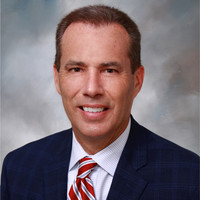
Is the funnel model fundamentally flawed? If so, how do salespeople approach that problem in a new and different way? Today’s guest will help explain why it may be helpful to think about the funnel in a different way. Carman Pirie is the Co-Founder of Kula Partners, which is currently handling mostly manufacturing clients. Carman … Read more
Episode 138: Setting up a Pipeline to Leverage All Channels – Jonathan Soares
How do you set up a pipeline that leverages all types of channels and technology, but also keeps that human spirit alive? Today’s guest will help answer that question and others. Joining the podcast today is Jonathan Soares. Jonathan is the founder and CEO of Agency Labs and has a background in both technology and … Read more
Episode 137: Ask the Right Questions – Chick Herbert
Can you get better performance from your team just by asking questions? Asking the right questions can build and strengthen your management coaching skills and allow your team to perform at their highest levels. Today’s guest will explain how the ability to ask the right questions can help you tap into the human potential of … Read more
Episode 136: Building Trust – Jason Treu
How does trust between team members translate to better communication and higher performance? And how can you translate your trust-building skills to your sales calls in order to build rapport quickly? To explore these questions and more, Jason Treu joins today’s podcast episode. Jason is an executive coach who works with teams to help them … Read more
Episode 135: Using Technology to Boost Sales – Jordan Stupar
How are you using technology to boost your sales prowess? Is there more that you could be doing? Do you like your CRM, and if not, how would you improve it? Today’s interview may give you some ideas. Today’s guest is Jordan Stupar, the founder and CEO of Sales Domination. Sales Domination is a company … Read more
Episode 132: The Ever-Evolving Customer Experience – Ian Moyse
The experience of being a customer has changed rapidly just over the past few decades. But while the customer experience has changed, has it improved? Is there room for further improvement? Today’s guest is Ian Moyse of Natterbox. He joins the podcast today to talk about disruptions in the customer experience, how customer experience is … Read more
